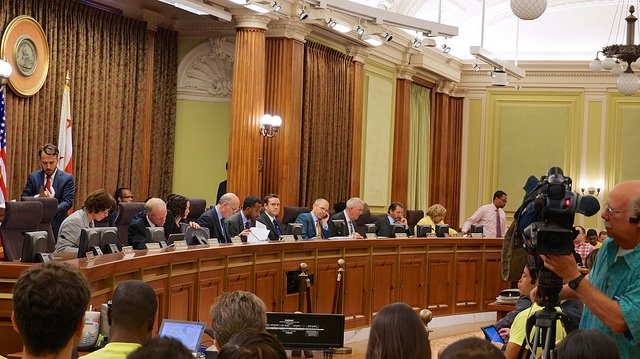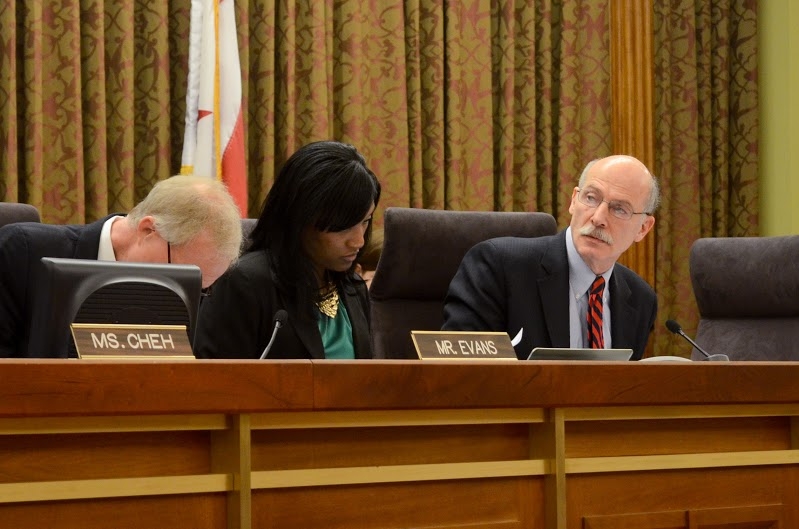From: District Wire
Get to know D.C. Government: D.C. Council

Photo: Tim Eytan/Flickr
This is a part of a series of explainers about local D.C. government and politics by District Wire. Next up is the city’s legislative body, the D.C. Council. Read DW’s previous explainer on Advisory Neighborhood Commissions here.
What is the D.C. Council?
The D.C. Council is the city’s legislative body. It writes laws, approves the budget and oversees agencies, boards and commissions. D.C. is not a state, but its council takes roles similar to those of a state legislature.
NBC 4 reporter Tom Sherwood, who has covered D.C. government for 25 years, said it’s a “small government, in terms of people, and they have to do everything.”
Sherwood also said that the Council is in a unique position and has more responsibilities than a normal municipal body.
“The way the council is structured, it’s different than any other legislature in the country. It has city, county and state responsibilities,” he said.
How many councilmembers are there?
Thirteen elected members serve four-year terms in the Council. One councilmember represents each of D.C.’s eight wards and are elected by their ward. Additionally, there are five “at-large” councilmembers elected by the whole city, one being the chairperson and two who must represent a minority party or have no party affiliation. The last two councilmembers may be from any party.
How do committees function?
Every two years at the beginning of a new council period, the D.C. Council chairperson has the power to create or disband committees within the council and assign councilmembers to them. There are generally six committees, and each oversees agencies and deals with policy related to its purpose. For example, the current Committee on Education is responsible for public education and oversees 12 education agencies.
Committees also reflect the needs of the city. Current Chairman Phil Mendelson scrapped an economic development committee this year and created a new housing committee to focus on the city’s rising affordable housing and homelessness issues. In this way, chairpersons have considerable power to dictate the council’s agenda.
Phil Mendelson (far right) is the current D.C. Council Chairman (Cuneyt Dil/The Eagle).
Are national political parties represented in the elections?
Yes. However, D.C. is an overwhelmingly Democratic city and so are most of its elected officials.
When was the D.C. Council created?
In 1973, President Richard Nixon signed the Home Rule Act, ceding congressional power to a locally-elected city council and mayor at the urging of city residents.
At the time, the Home Rule Act wasn’t very controversial, Sherwood said.
“People who might have been opposed to giving the city home rule were distracted by much larger issues, principally meaning Watergate,” he said.
Congress still retained key powers, however, including the final word on any legislation and the District’s budget. As a result, the Council and Congress clash over laws that citizens and officials of the city may support, but that congressional members oppose.
A recent fight being waged over limited home rule involves implementation of Initiative 71, which legalizes the possession and private home use of marijuana.
How does a bill in the Council become a law?
Typically, bills are introduced to the Council and then referred to the committee covering related subject matter. The committee will then hold public hearings and can amend or reject a bill.
If a bill is approved, it goes to review in the Committee of the Whole, which includes all 13 members of the council. If the Committee of the Whole approves the bill, it will head to the desk of the mayor. If the mayor signs the bill, it will take a trek up to Capitol Hill for 30-day congressional review (60 days for modifications to certain criminal legislation). If the bill survives Congress and Congress doesn’t pass a resolution disallowing the bill, the law takes effect.
Although the above process might sound long, since there are only 13 councilmembers, a bill only needs seven yes votes to be approved. This makes the barrier to advance legislation in D.C. very low. As Mike DeBonis of the Washington Post points out, Wyoming has a smaller population than the District, yet laws there must pass a 60-seat House and 30-seat Senate.
Check out this handy infographic for more.
Who are the current members of the D.C. Council?
Chairman: Phil Mendelson (D)
Ward 1: Brianne Nadeau (D)
Ward 2: Jack Evans (D)
Ward 3: Mary Cheh (D)
Ward 4: Vacant until March 28
Ward 5: Kenyan McDuffie (D)
Ward 6: Charles Allen (D)
Ward 7: Yvette Alexander
Ward 8: Vacant March 28
At-Large: Vincent Orange (D), Anita Bonds (D), David Grosso (I) and Elissa Silverman (I)




